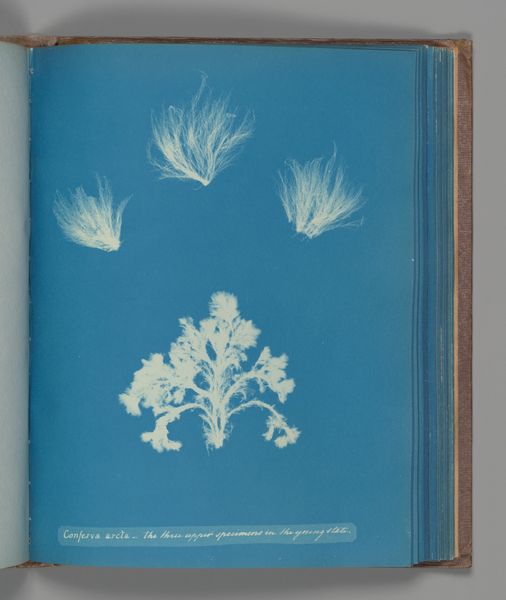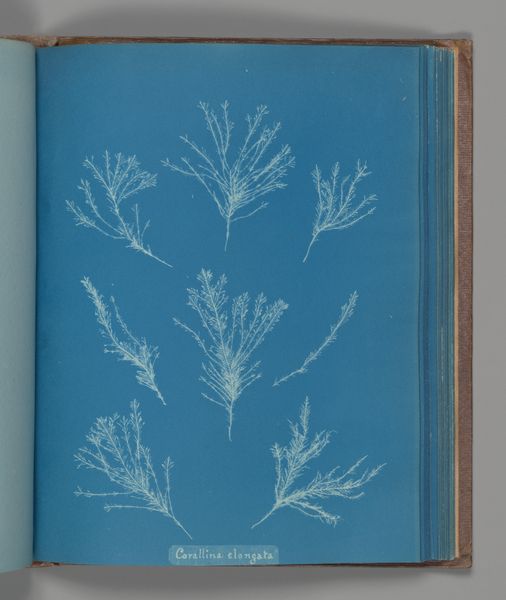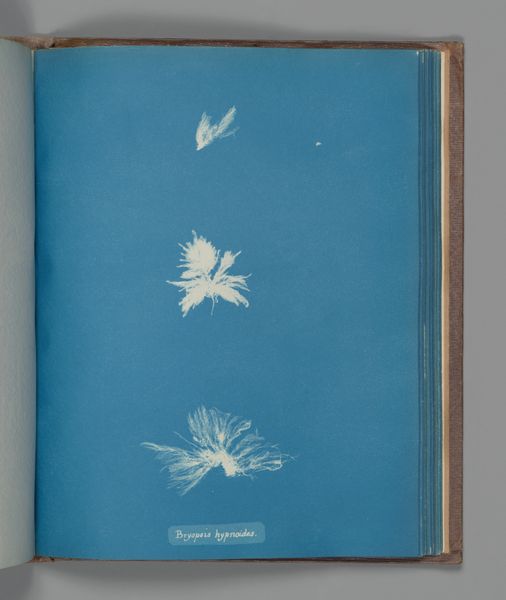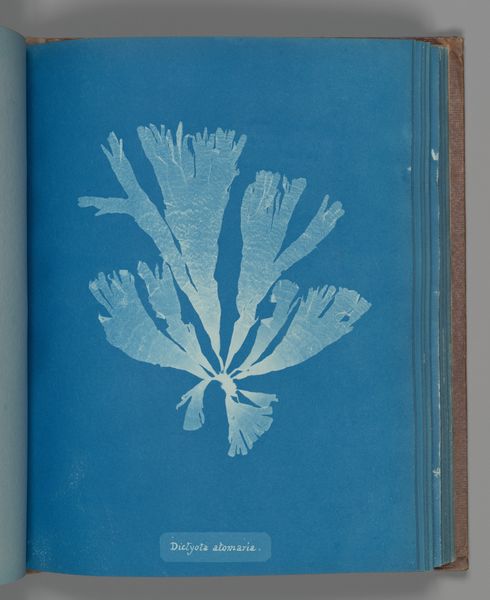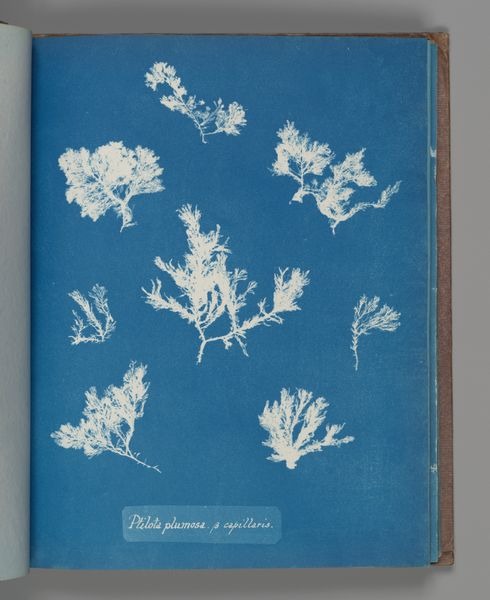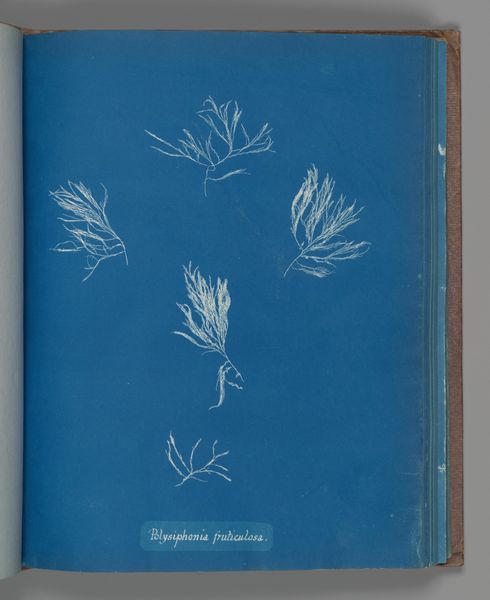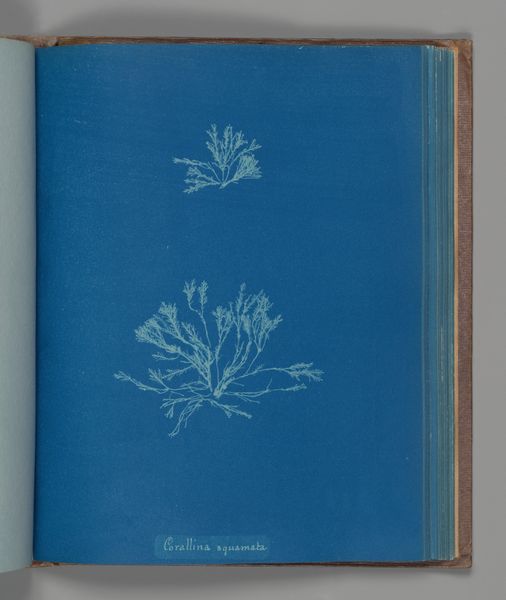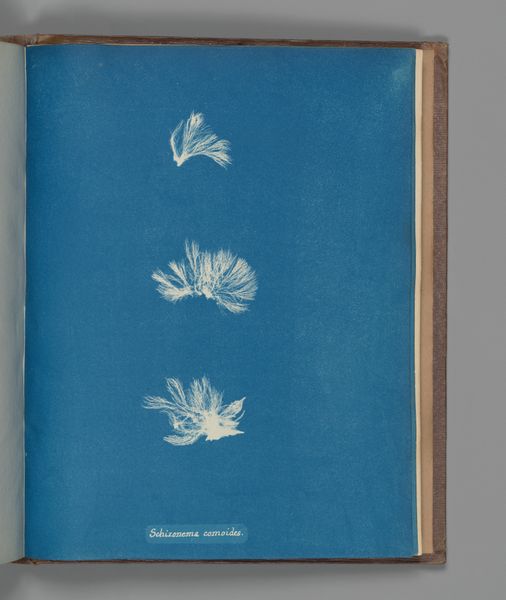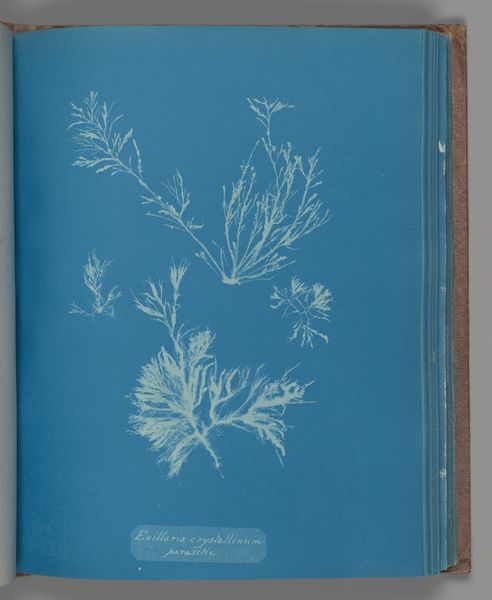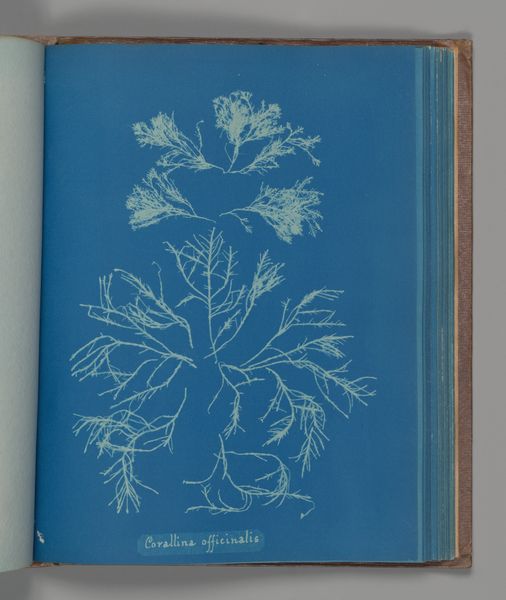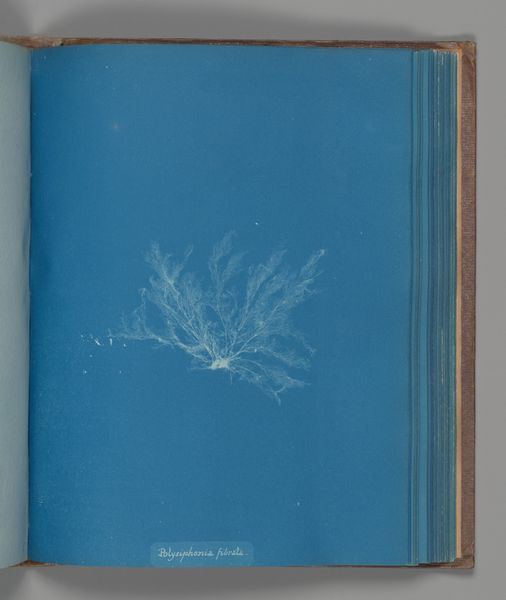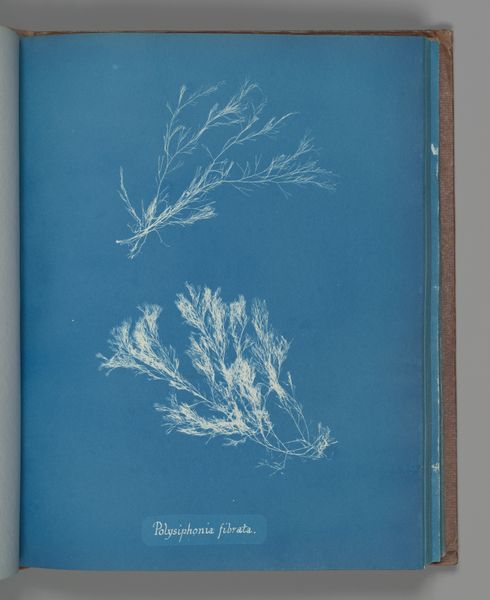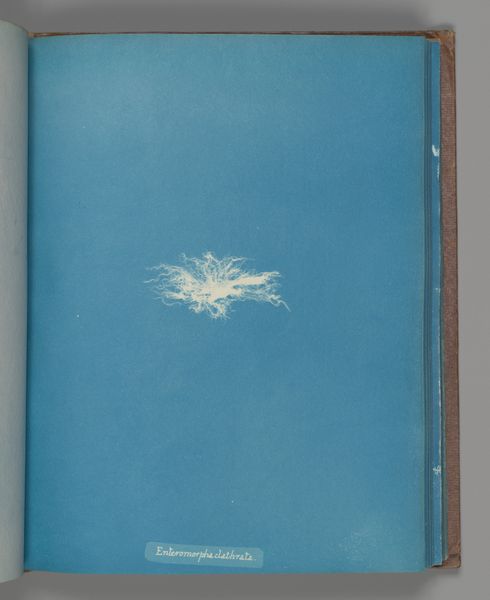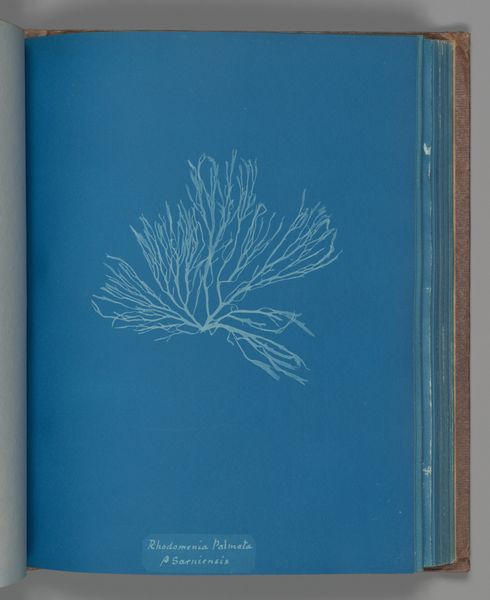
print, cyanotype, photography
#
still-life-photography
# print
#
cyanotype
#
photography
Dimensions: Image: 25.3 x 20 cm (9 15/16 x 7 7/8 in.)
Copyright: Public Domain
Curator: This arresting print is titled "Schizonema Dillwynii" made between 1851 and 1855 by Anna Atkins, currently housed at the Metropolitan Museum of Art. She created it using cyanotype, an early photographic printing process. Editor: My first thought? Ethereal. Those delicate white fronds against the deep Prussian blue background…it's like frozen lightning, or perhaps fossilized dreams caught in light. There’s something profoundly tranquil and a little melancholic about it. Curator: Melancholy suits the Victorian era. Beyond its aesthetic appeal, the work exemplifies scientific illustration. Atkins was a botanist who understood the pressing need to catalog specimens visually, and photography—especially cyanotype printing—offered a precise, accessible method. Notice how each tendril is carefully delineated, its structure laid bare through light and shadow. The cyanotype became an archive of shapes and forms. Editor: Archive… I feel a whisper of ocean salt, and imagine the meticulous effort – the Victorian equivalent of deep diving, capturing these specimens. There’s such a sense of intimacy, presenting specimens frozen at sea for further inspection under laboratory light. It feels so… present. Curator: And she chose cyanotype for a reason – the blue hints at water, origin of the algae, adding an environmental context to her visual dictionary. This simple palette – the single-tone, actually – pushes the viewer to consider shape and structure over mere colour. Consider her role not just as a photographer but as an archivist, translator, and messenger from this then-underexplored universe beneath the sea. Editor: I imagine her painstakingly placing those algal shapes. These impressions of the algae resemble ghostly plumes against an electric background. There's the charm of the handmade. It transcends simple scientific observation into a personal artistic statement, almost a type of sea-flora portraiture! Curator: Perhaps, in rendering scientific information aesthetically, Atkins aimed for the dual goals of accuracy and engagement. In truth, she ended up giving the Victorian world one of its first profound, artful visual books. Editor: Ultimately, the beauty resides in this almost accidental fusion of objective science and intensely subjective art. An odd dance that created these strangely beautiful specimens.
Comments
No comments
Be the first to comment and join the conversation on the ultimate creative platform.
